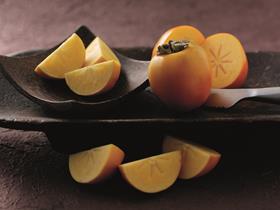
With the UK becoming more multicultural and the nation’s tastebuds diversifying, importers and consumers of exotic fruit and veg have never had it so good.
One of the poster products of this expansion – and the UK’s fastest-growing exotic fruit – is the persimmon, which, when in season, is currently outselling more ‘mainstream’ exotic produce.
“A combination of cookery programmes and other food media is exposing us to more different cuisines, ingredients, herbs, spices, fruits and vegetables than ever before,” one exotics wholesaler tells FPJ.
“Promotional campaigns have helped raise the profile of these, while retailers also realise they can achieve good sales and add excitement into the category at the same time.”
Mangoes and kiwifruit, which were introduced to shoppers and promoted heavily, were once considered to be ‘exotic’, but are now accepted by many British consumers as everyday products.
In recent years, though, persimmon – especially the variety the UK imports from Spain – has gone from having next-to-no profile, to being a regular listing on supermarkets’ shelves. Aldi, for example, listed the Spanish persimmon for the first time this year, and recently included it as part of its hallmark fresh produce ‘Super 6’ deal.
The fruit was virtually unheard of in the UK until 2005, when Foods and Wines from Spain launched a communications campaign to raise awareness of the fruit in the UK market.
There has since been a lot of marketing groundwork to promote its country, region of origin and Denominación de Origen status, and to make fruit fans aware that the Spanish crop is in season from October to January.
Thanks to this effort, the number of units of persimmon sold in the UK has risen from a few hundred thousand in 2009, to more than 12 million last year.
María José Sevilla, director of Foods and Wines From Spain, says: “The retailers and suppliers have got behind this product, which has been very important.
“The combination of activity and support has helped it become the most rapidly growing exotic in recent years – during the season, it now outsells products like mangoes and kiwifruit.
“The emphasis of the promotion has been on education, and introducing consumers to this fruit. The campaign this year includes in-store sampling to shoppers, recipes and other stories in the media and social media – linking to retailers who are stocking the fruit – where people can discuss the fruit. The first half of the season has been incredibly positive, and we’ve had great feedback from shoppers.”
In spite of some early hail and rain in the Valencia region, producers say this year’s crop of Spanish persimmon has been good quality.
The one grievance appears to be that sizes have been down slightly, although this suits the three-pack format many retailers use to sell their persimmon. Total volumes available, meanwhile, have been around 10 per cent up on last year.
Sevilla concludes: “The key target market for persimmon consists of shoppers who are open to trying something different.
“However, the persimmon is a very easy-to-understand fruit – it needs no preparation to speak of, has no pips or seeds, and you can eat the skin – which means it’s been accessible to many, many UK consumers. The early indications are that we’ll achieve a double-digit percentage increase in UK sales on the previous year.”






No comments yet